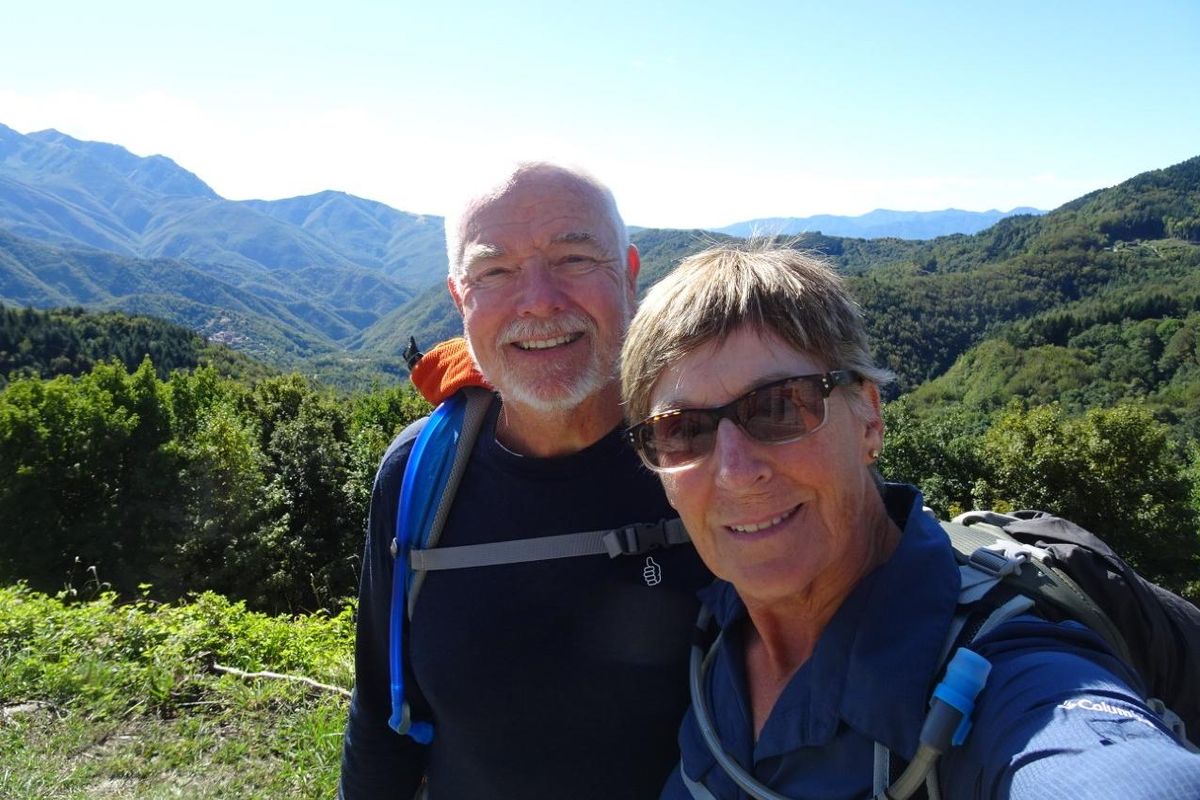For Spokane couple, 1,300-mile Via Francigena pilgrimage was a bridge and blessing

A Spokane couple has followed in the footsteps of Spokane author Timothy Egan in walking the 1,300-mile Via Francigena trail from Canterbury to Rome.
Egan is in Spokane at 7 p.m. Tuesday to speak about his latest book, “A Pilgrimage to Eternity: From Canterbury to Rome in Search of Faith,” at the Bing Crosby Theater.
Retired district court judge Rick White, 68, and his wife, retired Gonzaga Prep teacher Frankie White, 66, completed their first distance pilgrimage, the Camino de Santiago in Spain, in 2014 after both had retired.
“I guess we wanted a touchstone experience to start that,” Frankie White said.
“I looked at it as a bridge,” Rick White said. “We had planned it for two years. I was really counting on it being a transitional experience.”
While in Spain, they met a woman who asked if they had done the Via Francigena. Intrigued, they researched the trip and purchased a few books about it. Rick White said doing the entire route would take 99 days, an impossibility due to a law that limits stays in Europe by nonresidents to 90 days.
They decided to break the trip into three segments.
In the Middle Ages, the Via Francigena was a major pilgrimage route to Rome. Many people still walk it as a pilgrimage. Frankie White said they would often stop in small churches along the way to light candles, but the couple said they aren’t regular churchgoers. “We’re more spiritual than religious,” she said.
They immediately noticed a big difference between the Camino de Santiago and the Via Francigena. In Spain, there were almost always other pilgrims in eyesight. “On the Via Francigena, you can go weeks without encountering another pilgrim,” Rick White said.
When they did encounter someone, the connection was usually easy. “You automatically feel like you have a connection with them because you’re walking the same route,” Frankie White said. “You fall into ‘How are you? Do you need anything?’ ”
“The vast majority of them are by themselves,” Rick White said. “The majority of them are women. Pretty soon they’re telling you their story.”
“That’s where the connection is made,” Frankie White said.
Like them, many of their fellow pilgrims were in transition. They had recently divorced or were widowed – or perhaps they were trying to figure out what to do next.
Walking the Via Francigena offers plenty of time to think and be alone with your thoughts.
“You’re in your head all day long thinking what you want to think,” Rick White said.
They would use their cellphones when they stopped at night but rarely used electronics during the day. Rick White would listen to audio books for a small part of each afternoon. “I would put on some music if I was really tired,” Frankie White said. “It was Led Zeppelin that brought me home.”
Each day, all they had to worry about was remembering to wash out their socks each night and wondering what they might have for dinner. “There’s a simplicity to your day that I think we both appreciated,” Frankie White said.
Along the way, they found moments to remember. Frankie White said on one particularly hot day, they ran out of water on a deserted farm road. An old man pulled up in a car and asked if they needed water, then drove home to get them some.
“We took pictures with him. We hugged him,” she said. “It was one of those blessed moments.”
Doing the entire route, even over two years, was challenging. “That’s the first time I’ve had a blister on top of a blister,” Rick White said. “I probably should have trained a bit more.”
Still, he said it wasn’t all about walking. He would sometimes sit and read in the shade if the mood struck him. “If we’re tired, we sit down,” he said. “There’s no hurry. You’ve got all day to get where you’re going. My favorite was to find a shallow stream, take my shoes and socks off and soak my feet.”
Both have read Egan’s book and were impressed by it. They plan to attend Tuesday’s event. “It was a travelogue, it was historical, it was a memoir,” Frankie White said of the book.
She said that she’s glad she didn’t read it until after they finished their trek because she might have felt bad about not stopping at the historical sites Egan details in his book. “After you’ve walked 12, 15, 18 miles a day, you don’t want to go to a museum,” she said. “It was about the walking, the solitude, the time to meditate and reflect.”
All that walking also meant replacing worn-out boots. “I started with three pairs and ended with one,” Rick White said. “We had a ceremony when we finished. We buried Frankie’s backpack and a pair of her boots and a pair of my boots. There was no point in bringing them back. They had holes in them.”
Along the route, they collected stamps from hotels and restaurants in a small booklet to prove that they’d done the trek. When they finished, they each got a certificate acknowledging their achievement. “There was no ceremony to it,” Rick White said.
There may not have been a lot of fanfare, but Rick White said completing the entire route isn’t a common achievement. “There is no data,” he said. “Some speculate only 5,000 people a year will do this.”
He said he would recommend the experience to others. “I would unhesitatingly say just start walking around your block and build yourself up,” he said. “Don’t be overwhelmed. We’ve seen all shapes, sizes, ages. It sounds difficult, but it’s not.”